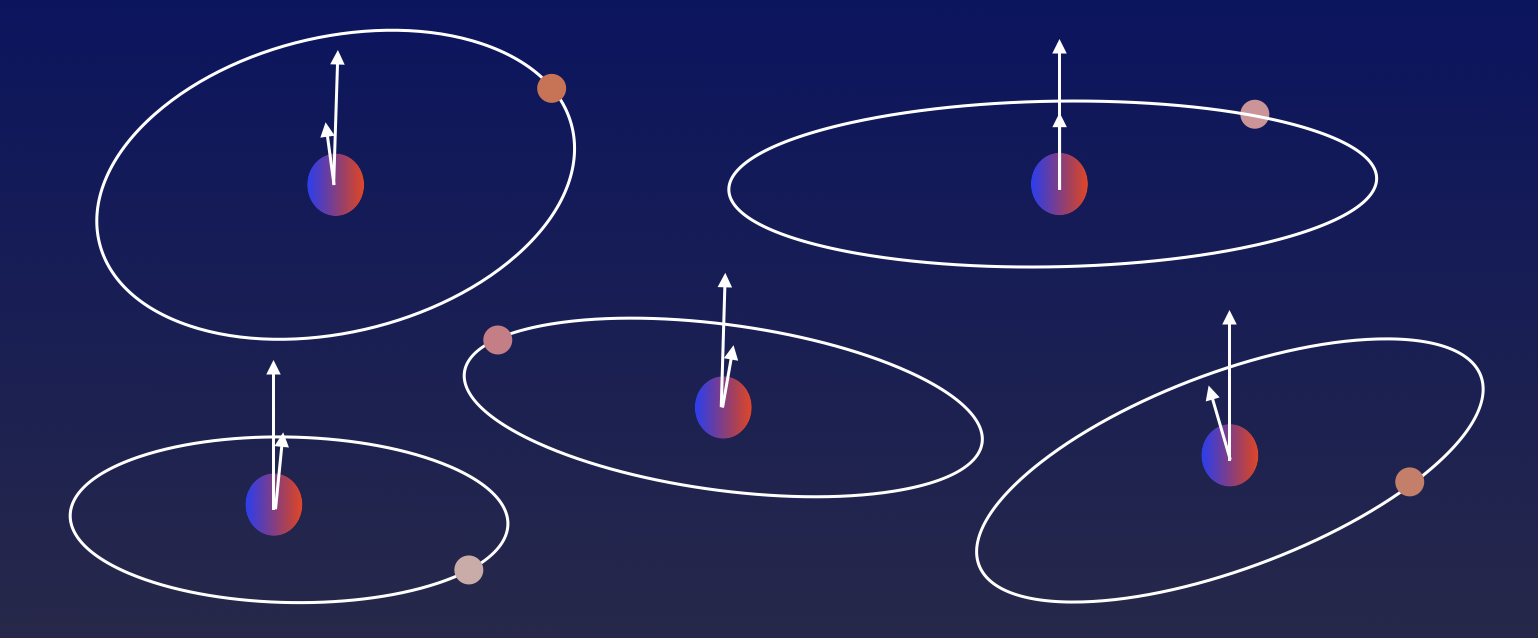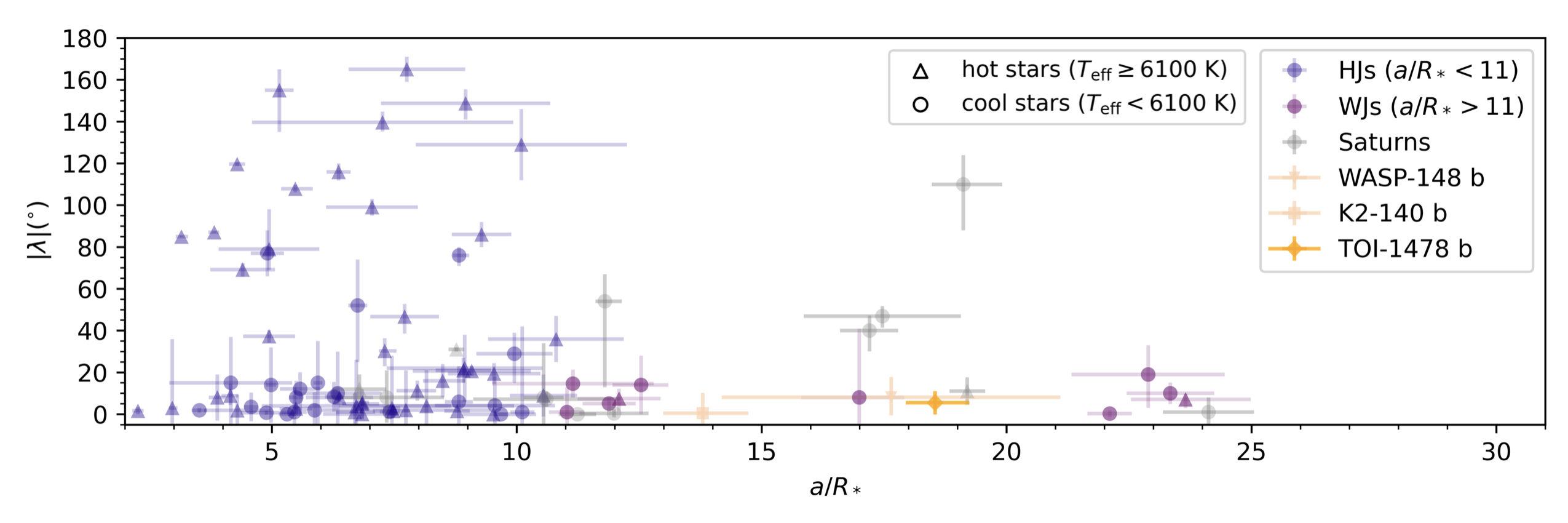Research Highlight #7
A Tendency Toward Alignment in Single-Star Warm Jupiter Systems
(Rice, Wang, Wang, et al. 2022 AJ 164, 104)

Warm Jupiters may just hold the key to understanding how hot Jupiters form. As their wider-orbiting cousins, warm Jupiters share many of the puzzling properties of hot Jupiters: they are similarly massive and close to their host stars. Yet, the differences between the two populations may offer the subtle clues necessary to delineate how both groups of planets formed.
While stellar obliquity constraints have demonstrated that hot Jupiters often show spin-orbit misalignments — that is, they often orbit sideways relative to their host star, or potentially even backwards — the distribution of warm Jupiter spin-orbit angles is not as well-constrained. Warm Jupiters are thought to form quiescently (that is, not in a dynamically violent way) due to their relatively high rate of nearby companion planets (Huang et al. 2016; Wu, Rice, & Wang 2023). They also experience weak star-planet interactions such that their spin-orbit angles are relatively difficult to realign through tides.
As a result, stellar obliquities in warm Jupiter systems may, in some cases, serve as a proxy for the initial obliquities of their parent protoplanetary disks. This distribution can directly inform our understanding of when hot Jupiters became misaligned: that is, did they form in tilted disks, or were they thrown onto misaligned orbits later?
In this paper, we address this question by examining the population of sky-projected obliquity measurements (λ) in single-star warm Jupiter systems. We begin by presenting the third result from the SOLES survey: a measurement of the Rossiter-McLaughlin effect in the TOI-1478 warm Jupiter system, obtained using the NEID/WIYN and Keck/HIRES spectrographs. We find that the system is aligned: the warm Jupiter orbits in roughly the same direction that the host star rotates.

Figure 1: Rossiter-McLaughlin measurements and best-fitting models for the WIYN/NEID dataset (left), the Keck/HIRES dataset (center), and the combined dataset (right).
Combining the SOLES results with the full population of past measurements, we show that all warm Jupiters in single-star systems measured to date have been aligned with their host star within 20 degrees.

Figure 2: Overview of stellar obliquity measurements in giant planet systems to date, with the three SOLES measurements at the time of this work highlighted.
Is this a coincidence? We conduct a series of tests to demonstrate whether single-star warm Jupiter systems are significantly more aligned than their hot Jupiter counterparts. We take random draws of measured |λ| values from three different groups of single-star hot Jupiter systems to determine the likelihood that we would have drawn zero planets with |λ| > 20 degrees from this population. We complete this test with 30,000 iterations, resulting in the figure below. 12, 12, and 10 values were drawn in the left, center, and right panels, respectively. We find that, in each case, the warm Jupiters are significantly more aligned than the hot Jupiter comparison populations.

Figure 3: Number of misaligned systems from random HJ draws (blue), compared with the observed zero misaligned WJs (purple line).
We also conduct a similar test with summed |λ| values, showing the distribution of summed values obtained for the single-star hot and warm Jupiters (below). The benefit of this test is that it does not assume any specific cutoff in |λ| for which planets are considered ''aligned'' vs. ''misaligned.'' Here, too, we find that single-star warm Jupiters constitute a distinctly more aligned population than their hot Jupiter counterparts.

Figure 4: Distribution of cumulatively summed |λ| values for hot (blue) and warm (purple) Jupiters. 12, 12, and 10 values were summed in the left, center, and right panels, respectively.
Ultimately, we conclude that warm Jupiters in single-star systems tend to be more aligned than analogous hot Jupiters. This finding implies that planets in single-star systems typically form in aligned protoplanetary disks: warm Jupiters form aligned and stay that way, while hot Jupiters are misaligned after protoplanetary disk dispersal through, for example, high-eccentricity migration.
Several outstanding questions still remain — how does eccentricity play into this picture? What happens in binary or multi-star systems? Just how rare is it to find a misaligned warm Jupiter in a single-star system? Fortunately, we can look forward to many future measurements ahead to more fully unveil the mysterious origins of hot and warm Jupiters.